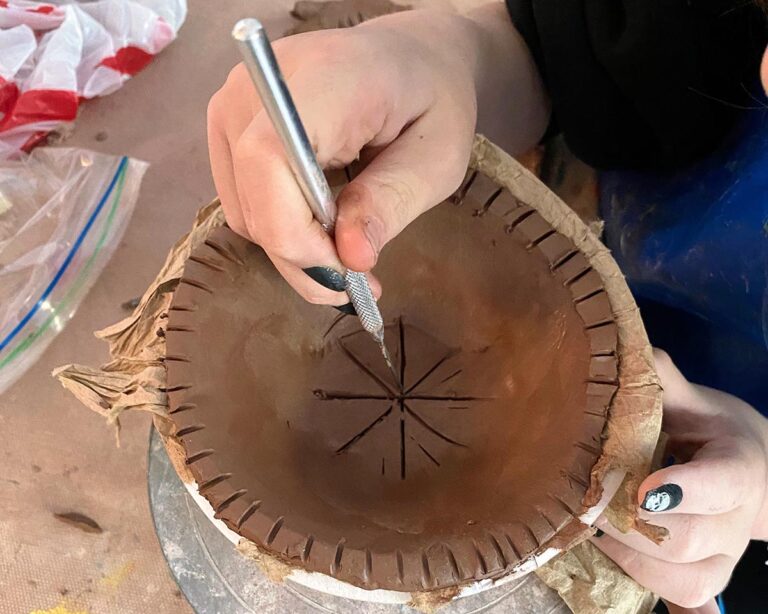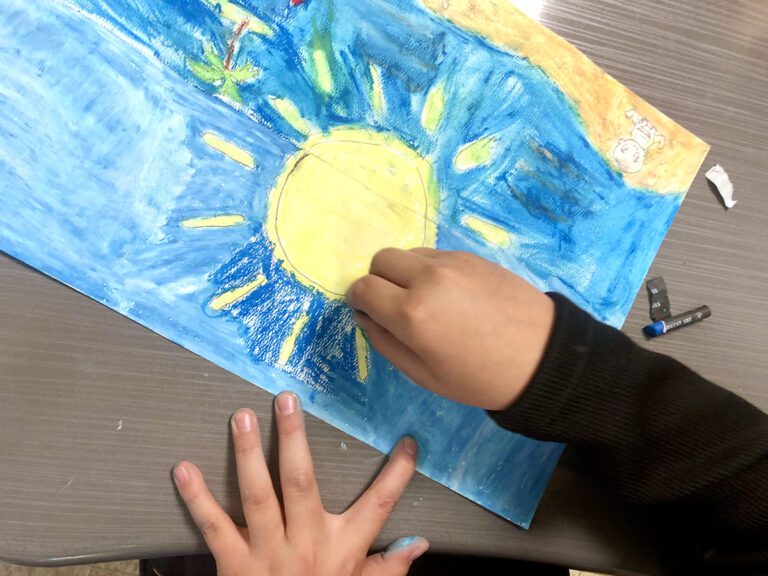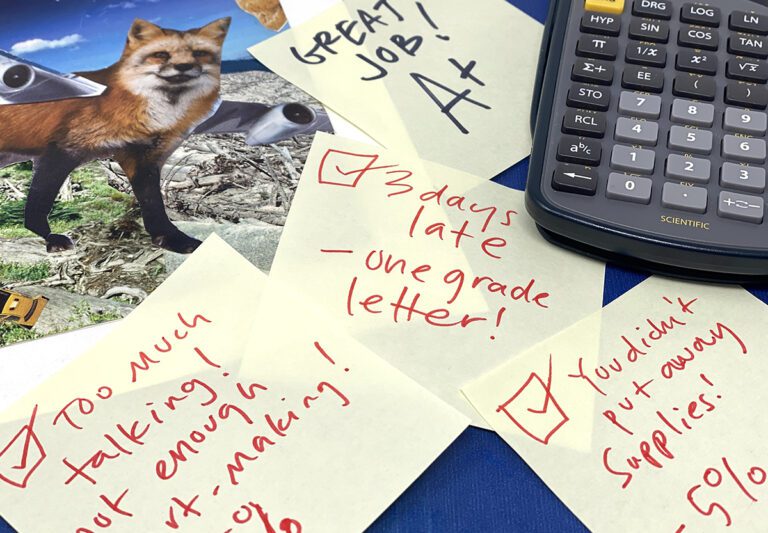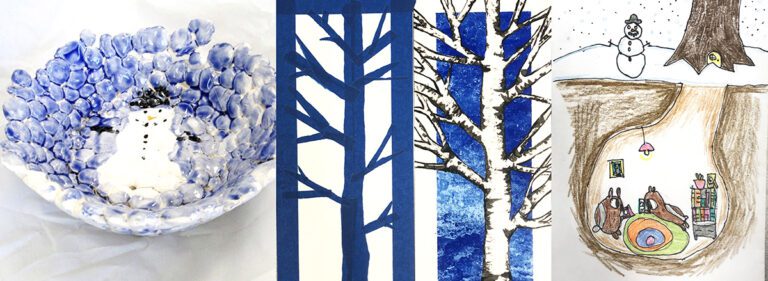 Storytelling has always been a part of art, whether it is a narrative told by the artist, the one seen by the viewer, or even the art of storytelling itself. Addie Hirschten, a painter, public speaker, storyteller, and educator, has put together a collection of incredible art stories in her new book entitled The Alchemy of Art. Through the course of 50 folktales, fables, myths and true life anecdotes, Hirschten shares wisdom, creativity and inspiration for artmaking–all wrapped up in short chapters designed to be read aloud to your class. Most importantly, that inspiration can help kids dive deeper into their artwork and into the meaning behind what they do.
Storytelling has always been a part of art, whether it is a narrative told by the artist, the one seen by the viewer, or even the art of storytelling itself. Addie Hirschten, a painter, public speaker, storyteller, and educator, has put together a collection of incredible art stories in her new book entitled The Alchemy of Art. Through the course of 50 folktales, fables, myths and true life anecdotes, Hirschten shares wisdom, creativity and inspiration for artmaking–all wrapped up in short chapters designed to be read aloud to your class. Most importantly, that inspiration can help kids dive deeper into their artwork and into the meaning behind what they do.
The design of the book makes it a dream to use in the classroom.
The stories are short, yet captivating. Each contains the source of the story, some thoughts from the author, and ideas for classroom use. I’ve actually been using The Alchemy of Art in a few different ways in my classroom over the past two months, and I want to share some ways it can be utilized to engage your kids and help them create more meaningful work.
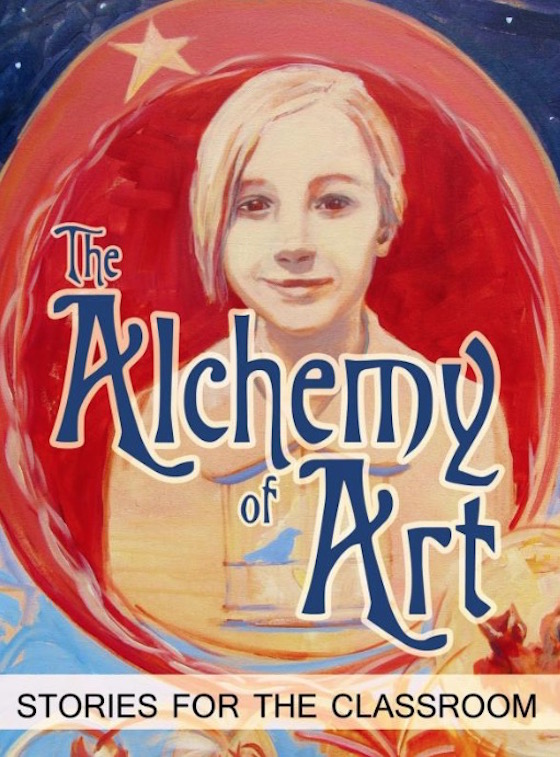
1. Drawing Prompts
As teachers, we never dismiss good ideas for drawing prompts, and there are plenty here that go beyond a simple idea. The rich text provides opportunities to explore, to think, to discuss, and to develop concepts. My favorite piece to use as a prompt is “The Faceless Nun,” which Hirschten says “urges the reader to complete their life’s work before they die.” I ask my kids to think about what they want to accomplish in their lifetime, and how they can show those ideas in their work. It always creates a rich discussion and leads to meaningful, personal work.
When I asked Hirschten about her favorite uses for the stories, she mentioned something very similar when it comes to drawing lessons: “I love using some of the stories as a prompt for them to imagine the scene they are creating,” she said. “For example, you can read ‘Flannery’s Dream’ then ask the students to draw their own dreams. Or with ‘Ma Liang and the Magic Paintbrush,’ you can ask them to illustrate an image that they would want to spring to life.”
2. Class Openers and Introductions
Just like with drawing prompts, I’m a sucker for a good anticipatory set, and this book is full of them. There are two stories in particular–“Jack and the Ghost” is one, “The Faceless Nun” is the other–that are dramatic, suspenseful, and capture students’ attention immediately. I used them when introducing a lesson about facing your fears, and the kids responded incredibly well. The activity is a great tool for getting kids talking and thinking about the upcoming lesson.
More importantly, however, these stories introduce kids to some of the bigger ideas we want them to see when they are in our classrooms. Hirschten said this: “When I read these stories to my students, I want for them to feel empowered to take action. I want for them to understand that art is a language that they can use to say what they want to say . . . they can learn the skills needed to create what their hearts desire. The propensity to create art is universal to humanity.”
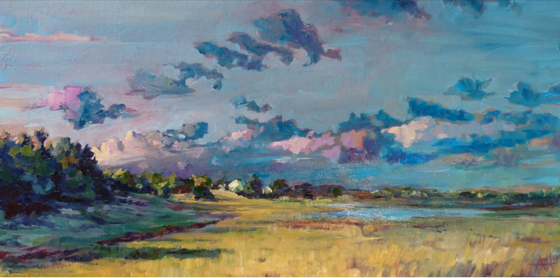
3. Discussions and Extensions
As you know, I love to read aloud to my class, and they have loved The Alchemy of Art. One of my favorite parts of this book is the discussion it sparks amongst my students when I am finished reading (and if you teach high school, you know that’s no small feat). The book is organized into sections that deal with bigger issues–”What is Beauty?” for example, as well as Craftsmanship, and Perseverance–that lead to some meaningful, in-depth discussions. Individual stories pique some interest, as well, especially “Matisse’s Second Life” and “The Works of the Louvre.” Though those stories are brief, they have led to long talks in many of my classes.
4. Cross-Curricular Connections
The idea of cross-curricular connections is where this book might act as the best resource for an art teacher. These stories have an obvious connection to English/Language Arts, but there is so much there about science, astronomy, psychology, architecture, history, and views into cultures from around the world. You can find Greek mythology, ancient Buddhist koans, African and Indian folk tales, and even one of Aesop’s fables. Each of these can build a bridge to different subjects and serve as an introduction to all types of interdisciplinary learning.
Whether you’re looking for something to read aloud in class, a way to introduce new concepts or cross-curricular ideas, or even just a good read for enjoyment and inspiration, The Alchemy of Art is definitely worth your time. Most importantly, it is an incredible tool that helps kids explore the reasons and meaning behind the work they make.
Do you ever use storytelling in your own classroom?
What do you do to help your students explore meaning in their work?
Magazine articles and podcasts are opinions of professional education contributors and do not necessarily represent the position of the Art of Education University (AOEU) or its academic offerings. Contributors use terms in the way they are most often talked about in the scope of their educational experiences.

